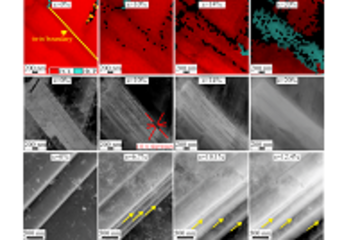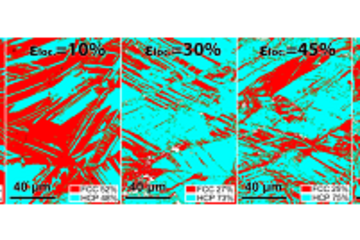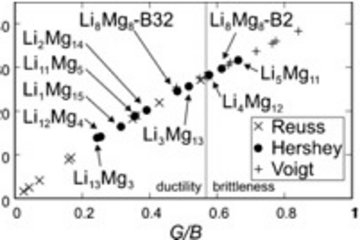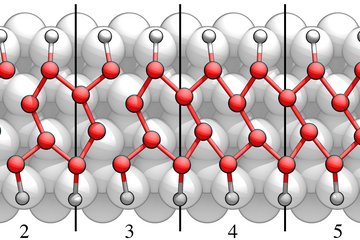All genres
21.
Journal Article
On the interaction of precipitates and tensile twins in magnesium alloys. Acta Materialia 178, pp. 146 - 162 (2019)
22.
Journal Article
The through-process texture analysis of plate rolling by coupling finite element and fast Fourier transform crystal plasticity analysis. Modelling and Simulation in Materials Science and Engineering 27, 085005 (2019)
23.
Journal Article
Site-specific quasi in situ investigation of primary static recrystallization in a low carbon steel. Materials Science and Engineering A: Structural Materials Properties Microstructure and Processing 755, pp. 295 - 306 (2019)
24.
Journal Article
DAMASK – The Düsseldorf Advanced Material Simulation Kit for modeling multi-physics crystal plasticity, thermal, and damage phenomena from the single crystal up to the component scale. Computational Materials Science 158, pp. 420 - 478 (2019)
25.
Journal Article
Numerical Benchmark of Phase-Field Simulations with Elastic Strains: Precipitation in the Presence of Chemo-Mechanical Coupling. Computational Materials Science 155, pp. 541 - 553 (2018)
26.
Journal Article
On the role of the collinear dislocation interaction in deformation patterning and laminate formation in single crystal plasticity. Mechanics of Materials 125, pp. 70 - 79 (2018)
27.
Journal Article
An integrated crystal plasticity–phase field model for spatially resolved twin nucleation, propagation, and growth in hexagonal materials. International Journal of Plasticity 106, pp. 203 - 227 (2018)
28.
Journal Article
Review and outlook: mechanical, thermodynamic, and kinetic continuum modeling of metallic materials at the grain scale. MRS Communications 7 (4), pp. 735 - 746 (2017)
29.
Journal Article
Development of damage-resistant dual-phase steels. Chernye Metally 57 (9), pp. 40 - 41 (2017)
30.
Journal Article
Crystal Plasticity Study on Stress and Strain Partitioning in a Measured 3D Dual Phase Steel Microstructure. Physical Mesomechanics 20 (3), pp. 311 - 323 (2017)
31.
Journal Article
Identifying Structure–Property Relationships Through DREAM.3D Representative Volume Elements and DAMASK Crystal Plasticity Simulations: An Integrated Computational Materials Engineering Approach. JOM-Journal of the Minerals Metals & Materials Society 69 (5), pp. 848 - 855 (2017)
32.
Journal Article
A Flexible and Efficient Output File Format for Grain-Scale Multiphysics Simulations. Integrating Materials and Manufacturing Innovation 6 (1), pp. 83 - 91 (2017)
33.
Journal Article
Coupled Crystal Plasticity–Phase Field Fracture Simulation Study on Damage Evolution Around a Void: Pore Shape Versus Crystallographic Orientation. JOM-Journal of the Minerals Metals & Materials Society 69 (5), pp. 872 - 878 (2017)
34.
Journal Article
Entwicklung schadenstoleranter Dualphasenstähle. Stahl und Eisen 137, p. 88 - 88 (2017)
35.
Journal Article
A virtual laboratory using high resolution crystal plasticity simulations to determine the initial yield surface for sheet metal forming operations. International Journal of Plasticity 80, pp. 111 - 138 (2016)
36.
Journal Article
Unraveling the temperature dependence of the yield strength in single-crystal tungsten using atomistically-informed crystal plasticity calcula- tions. International Journal of Plasticity 78, pp. 242 - 265 (2016)
37.
Journal Article
Neighborhood influences on stress and strain partitioning in dual-phase microstructures. An investigation on synthetic polycrystals with a robust spectral-based numerical method. Meccanica 51 (2), pp. 429 - 441 (2016)
38.
Journal Article
Crystal plasticity study of monocrystalline stochastic honeycombs under in-plane compression. Acta Materialia 103, pp. 796 - 808 (2016)
39.
Journal Article
Analytical bounds of in-plane Young’s modulus and full-field simulations of two-dimensional monocrystalline stochastic honeycomb structures. Computational Materials Science 109, pp. 323 - 329 (2015)
40.
Journal Article
An Overview of Dual-Phase Steels: Advances in Microstructure-Oriented Processing and Micromechanically Guided Design. Annual Review of Materials Research 45, pp. 391 - 431 (2015)











